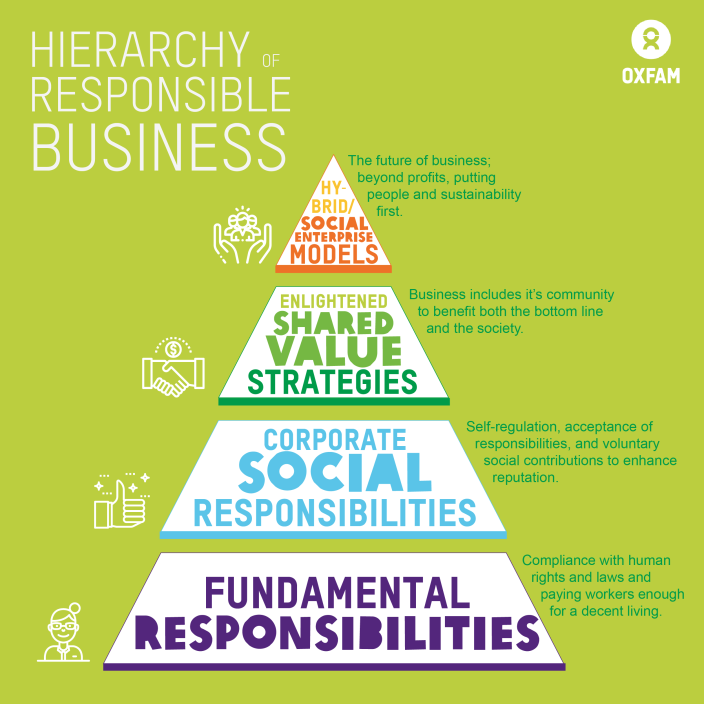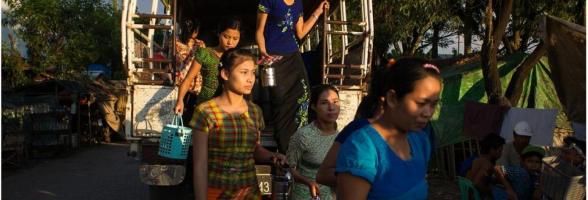The population-weighted Gini coefficient, which captures income inequality, rose from 32.6 in 1990-99 to 39.1 in 2014 in Southeast Asia; an increase of about 20 per cent in two decades. Gross domestic product (GDP) in the ASEAN region has climbed from $37.6 billion in 1970 to $2.6 trillion in 2016. In the past two decades, over 100 million people have joined the workforce across the region, and millions of people have been lifted out of poverty. Investment is up, infrastructure has been built, trade is rising, and regional prosperity has boomed. Unfortunately, despite this economic progress, the divide between the rich and poor has widened. To put it in tangible terms, the four richest men in Indonesia have more wealth than 100 million people. In Vietnam, the country’s richest man earns more in a day than the poorest person earns in 10 years, and in Thailand, 56% of national wealth is owned by the richest 1%. As a region, while Asia Pacific is home to more billionaires than anywhere else, more than 70 million in Southeast and East Asia don’t have enough food to eat.
Women Left Behind
Women and girls have been left behind; they earn up to 30% less than men do for the same work, and while performing two and a half times more household chores and other forms of care work. A study by the Asian Development Bank estimates that if female workforce participation rose from 57.7% to 66.2%, in just one generation Asia’s economy could see a 30% growth in income per capita. A global study by McKinsey found that “companies in the top quartile for gender diversity were 27 percent more likely to outperform their national industry average in terms of economic profit”.
Equality matters to all Asians and their leaders
Inequality concerns us all – the citizens, governments, business, and activists. The Association of Southeast Nations (ASEAN) wants to “advance towards inclusive growth and sustainable development” according to Le Luong Minh, the Secretary-General of ASEAN. The ASEAN Economic Community Blueprint 2025 describes a resilient, inclusive, and people-oriented, people-centered economy. The World Economic Forum has for many years identified inequality as a critical risk to global prosperity. Because economic growth is driven by business, to achieve inclusive growth, we need inclusive business. From initiatives to promote social and environmental sustainability in the Cambodian agriculture and inclusive businesses working with poor communities in Thailand and Lao PDR to Fair Trade social enterprises whose profits are shared with producers, a vibrant spectrum of more equitable business models is emerging. But to have a truly inclusive Asia, we need to scale up such business models to the mainstream. In ASEAN, there are homegrown big Asian corporations as well as big global business and value chains. However, they are yet to adopt inclusive and responsible business practices that will lead to the reduction of social and ecological footprints of business, enable stronger participation of women, fair value chains, and enhancing community resilience.
Governments in Southeast Asia are increasingly working to support and enable these more equitable models by harnessing the fiscal and regulatory levers they have at their disposal. South Asia ranks second behind North America in progressive policy, with Vietnam, Singapore, Thailand, and Malaysia providing legal recognition and incentives to start social enterprises.
Inclusive business is in demand
Inclusive business is in demand and can be highly successful. How do we know this? Because the Southeast Asian consumers have told us that they are more likely to favor businesses who develop market-based solutions to social and environmental challenges. 64% of them say they’ll pay more to companies who care. Investors are now also increasingly applying an ethical lens when considering where to invest their capital. Environmental, Social and Governance (ESG) investing is on the rise, and social or impact investing is grabbing ever more attention with already $3.6 billion spent in South-East Asia by impact investors.
Oxfam’s perspective on Inclusive Business
We believe that successful inclusive business strategies should include three characteristics:
- Improving the living conditions of poor people: Increased incomes and employment opportunities, improved knowledge and skills, access to markets, better infrastructure, access to goods and services and premium prices benefit poor communities.
- Creating shared value: Low-income communities are integrated into efficient value chains productively and equitably. Communities will enjoy better incomes, improving living conditions, and a more efficient, resilient and competitive value chain is built.
- Commercial success for businesses: Increased productivity, improved quality, differentiation opportunities, and market expansion through the inclusion of poor people create long-term economic value.
If a business model is reliant on paying poverty wages, discriminate women workers, relies on informal workers to make a profit, then this is a flawed model not likely to be sustainable. For a business model to be considered genuinely inclusive and sustainable, it should shift from an overarching goal of profit maximization to one where its workers’ and communities’ rights, dignity, and wellbeing are also ensured. An inclusive business provides solutions to poverty while improving its competitiveness, perusing the dual goals of financial sustainability and social purpose. A new generation of entrepreneurs in Southeast Asia are innovating with business models, driven by a desire to address the social issues facing the region. Institutional funding and technical assistance from around the world is helping to spur development. Public policy is emerging supporting their growth through new legal frameworks and new incentives and enabling environments. There is an opportunity for the region to promote a new vision for businesses where successful companies are run in the interests of communities, environment, and economic benefits that are sustainable and inclusive.
Hierarchy of Responsible Business
Just how committed businesses are to their social responsibilities and to models that promote holistic well-being of their communities and environment can be captured in a value hierarchy. The below pyramid places at the bottom those complying with minimal requirements and at the top those seriously committed to inclusivity and sustainability over profit maximization.

The Future of Business Report
This briefing is intended for business leaders, investors and policymakers in Southeast Asia.
Many of us share a vision of inclusive economic development. Drawing on what Oxfam and others have learned from private sector partnerships, a growing body of research and examples of new models of business, we aim to show how businesses in Southeast Asia can help deliver this vision and tackle poverty and growing levels of inequality in the region.
From corporate social responsibility (CSR) and inclusive business models, to social enterprises and hybrid enterprises, we show how businesses and entrepreneurs can prioritize people and the planet alongside profit.
This paper begins with a contextual overview of the region, focused on the challenge of inequality. It then highlights how business can be part of the solution, presenting a spectrum of approaches, accompanied by case studies. Section 2 then takes a deeper look at how social enterprise models can be supported to thrive and Section 3 makes recommendations for the region’s businesses and offers further resources for practitioners.



